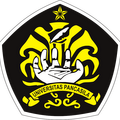Perbedaan Kreativitas antara Anak Monolingual dan Bilingual
Abstract
The purpose of this research was to identify the difference in creativity between monolingual children and bilingual children. Peal and Lambert (in Landry, 1973) speculate that bilingual individuals learn more flexibly in their way of thinking because they learn two systems of labeling and are directed to perceive more aspects of their surrounding. Flexibility is one of important creativity factors. Therefore, it is concluded that bilingual children are more creative than monolingual children. This research was quantitative with an explanatory approach. The measurement tool used in this research was Tes Kreativitas Figural (TKF) adapted from Circle Test from Torrance and having been standardized by Education Psychology Division of Psychology Faculty, University of Indonesia. The subjects of this research were the students from Grade 5 National School (using Indonesian as the language in class) Al-Izhar Islamic Elementary School as well as National Plus School (using Indonesian and English as the languages in class) Cikal Elementary School. The analysis results show that the monolingual children have significantly higher creativity than the bilingual ones do. However, two-track analysis reveals the language(s) used in class significantly affect(s) creativity. Additional results show that the bilingual children have more ability to think abstractly than the monolingual ones do.










